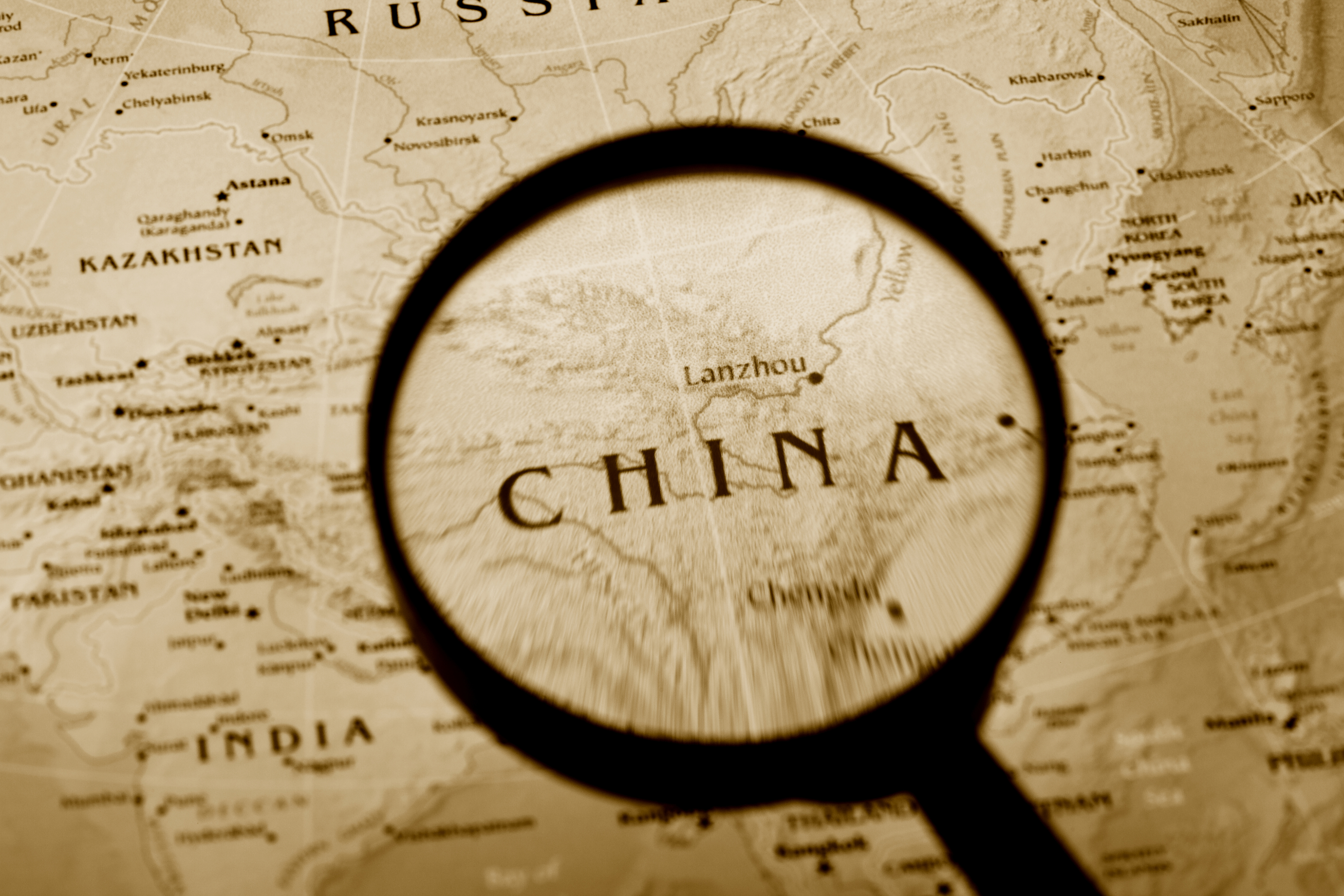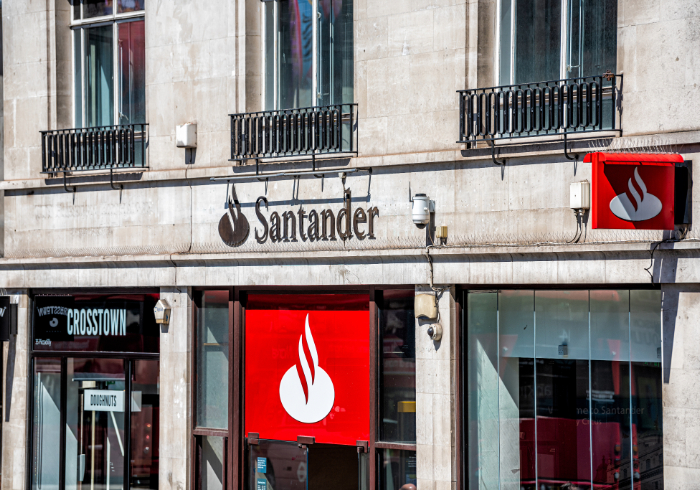A star still rising
China continues to be an important market for trade financiers. And while its banks may still lag regionally, their star is definitely on the ascent. For now, foreign banks can breathe easy, but not for long. China’s banks are catching up quick, writes Elliot Wilson.
From high above any port in Asia, you can see the barges, liners and supertankers unloading and reloading their wares. Palm oil, coffee, soybeans, iron ore, coal, steel, spices, plastics and wood products, as well as iPods, mobile phones, television sets and air conditioners by the barrel.
Most, these days, are heading for China’s now gargantuan economic engine, which sucks in commodities and semi-finished goods, processes them, and either ships them out again, or uses them to fuel its own giant internal economic turbine.
For any Asia-based trade or commodity banker these days – and for a raft of growing regional commodity growers, processors and shippers – China has already become the stuff of legend. Its potential is huge, and undoubted. Foreign banks queue up, rather like the tankers waiting to enter ports up and down China’s east coast, to gain access to, and finance, the country’s trade-based economy.
Whatever Beijing can’t mine, or grow, at home, it needs in huge supply – hence huge imports of iron ore from India, oil from the Middle East and Africa, aluminium from South America, and every conceivable metal and mineral under the sun from that lodestar of the south, Australia.
“You just have to pick up the business section of any newspaper to see that China has a huge appetite for any commodity – you just have to go to Shanghai to see the boats going in and out laden with every commodity you can imagine,” says Bruce Alter, ANZ’s new China trade chief, having recently joined the Australian bank from Wachovia Bank.
Yet how big is China’s market really
- Are foreign trade finance banks really benefiting from the country’s rise, or is the mainland’s leading trio of domestic lenders, including Bank of China (BOC) and Industrial and Commercial Bank of China (ICBC), set to dominate not just their home market but, increasingly, the wider Asia market as their leading corporations intertwine their tentacles around the region
-
What’s the answer
On the surface, the answer right now is that there’s room enough for everyone. Foreign trade finance banks including ANZ, BNP Paribas, Fortis, ING, Rabobank, Société Générale (SocGen) and Standard Chartered are going great guns in China, where their business is as big, if not bigger, than anywhere else in Asia.
“In the commodity finance and trade finance circle, you have five or 10 key players,” says ANZ’s Alter. “This is a space where European and Australian banks specialise in. It’s driven by commodity exports – that’s what turns the switch on for China’s export-based industry.”
That gung-ho attitude is being born out by many of the deals being cut in the mainland. Last year 13 banks including Bank of China, BNP Paribas, Calyon and SocGen arranged a US$1.4bn facility for Sino-Angolan firm Sonangol Sinopec International – the first greenfield limited recourse financing to be arranged in the west African country (a GTR ‘Best Deal of 2006’).
Also last year, China Minmetals Corporation signed a US$2bn joint venture to mine copper with Nacional del Cobre de Chile (Codelco). The deal involved the Chinese firm investing US$550mn in exchange for a 50% stake in Codelco, and 57,000 tonnes of copper a year for the next 15 years. China Development Bank, the country’s leading policy lender, financed the deal.
And then there was StanChart’s recent coup, when it won the right to sole arrange a Rmb160mn (US$20mn) multi-tranche pre-delivery financing that converts later into a warehousing for Shanghai Milan (another GTR ‘Best Deal of 2006’).
But one need only look into Central and Southeast Asia to see how much impact China’s giant economic turbine is having on the region – and the rest of the world. Mainland energy and resources firms, notably Citic Group and China National Petroleum Corporation, are wading through the tortuous fine print and regulatory barriers that stand in the way of completing multi-billion-dollar acquisitions of oil resources in the far west of Kazakhstan.
Meanwhile China’s rapidly changing dietary regimen, and a latent need to diversify its energy needs away from fossil fuels, is creating a frantic push to buy as much Malaysian and Indonesian palm and soybean oil as possible. Chinese imports of palm oil are set to balloon this year after, after Beijing in 2006 scrapped an import tax on edible oils.
The country’s diet is changing from simple rice-and-vegetable meals to fattier diets based on fried, processed foods. Beneficiaries include Hong Kong-based, Singapore-listed agribusiness company Noble Group, Malaysian palm oil growers such as IOI Corp and KLK, Singapore-listed Indonesian firms Golden Agri-Resources and Wilmar Group, and Jakarta-listed plantation firms London Sumatra and Astra Agro.
Banks squeeze in
Meanwhile foreign banks continue to try to squeeze their way into the crowded Chinese market. Many have been there for more than a decade, but in recent years the world’s biggest trade finance lenders have sought to set up joint ventures with mainland banks, in order to further embed themselves in China’s burgeoning market.
So ANZ has a 20% strategic stake in Tianjin City Commercial Bank, while European rivals BNP Paribas and ING have 20% stakes in two more city lenders in Nanjing and Beijing respectively.
StanChart is a neighbour of ANZ’s in Tianjin, boasting a strategic partnership with the newly created northeastern lender Bohai Bank. Rabobank meanwhile has focused on developing partnerships, in line with its soft commodity history, with a number of agricultural lenders and co-operatives in eastern Zhejiang province.
Only SocGen, among the European contingent there, lacks a joint venture – though not for trying. Its long-drawn-out bid for Guangdong Development Bank finally fell through this year, with US rival Citigroup finally triumphing in an ill-tempered race to buy the troubled southern Chinese lender.
Meanwhile other, smaller banks are looking to enter the fray – in March UCBH Holdings bought Shanghai-based Business Development Bank for US$205mn. That gave UCBH, which earns most of its revenues providing trade finance services to US coporates and traders doing business in China, greater access to the mainland market.
Partner or no
But how vital is it to set up a partnership in China
- One market participant, who declined to be named, says that a strategic relationship with a Chinese lender “helps, certainly, but not as much as you’d think”.
“The issue of whether to incorporate locally or whether to take over a bank has a huge impact on us,” admits ANZ’s Alter. Christian Stauffer, managing director of EuroFin Asia, says he would be “pretty concerned” if he ran a foreign bank lacking a strategic partnership in the mainland.
To be sure, a full banking licence in China helps smooth the way with some regional corporations and authorities. Yet China has become such a vast market that any partnership in one city – say, Beijing or Guangzhou – has no clout in any other of China’s growing legion of super-cities.
“All of the foreign banks in China are chasing the easy stuff because they think the growth is there,” says one Shanghai-based European trade finance specialist, who declined to be named. “The foreign bank take of the Chinese market is a fraction of what the Chinese banks are doing.”
The vast majority of trade finance deals, he says, are done by the local branches of the big three banks. And goodness knows the domestic lenders have enough outlets – ICBC, China’s largest bank, boasted 24,000 at the last count. Most provincial corporates take credit lines and basic financing facilities with their latest branch of ICBC or Bank of China, not ANZ or SocGen. They’ve done it for years, and they’ll continue doing it for years to come.
The European finance specialist also asks pointedly: “How many foreign banks offer real trade finance services to Chinese corporates inland
- I’m not talking about the top 20 (Chinese) corporations – they’re obvious and they are fair game. What about the smaller ones, the companies with turnovers of US$10mn or US$100mn. Who is offering warehousing services, or letters of credit, or financing to them
- None of the foreign banks – and the reason is that the foreign banks either don’t know where they are, and don’t know how to find them, or don’t know how to manage their risk exposure (to the companies) when they finally find them.
And make no mistake – finding some of these Chinese corporates can be extremely tricky. A conference held in the city of Hangzhou last year, organised by US investment bank Lehman Brothers, invited 100 leading private firms in the eastern province of Zhejiang. One Lehman banker, a native of mainland China who had pounded the pavements of eastern China looking for bankable private firms for years, confessed quietly that he didn’t know a single one of them.
“These are companies that will be big, not just in Chinese terms, but in regional or global terms, and no one knows who they are or where they are. Everyone wants to finance what they’re producing and exporting, but you have to be able to track them down first.”
Hong Kong thriving
Intriguingly, despite the rapid growth of trade financing in China, the opportunities for commodities financing remains in Hong Kong and are probably more than currently in Shanghai, according to Francis Lacourte, the Hong Kong-based Asia head of natural resources and related industries at French bank Natixis. “Everyone is attracted to China, but the largest portion of the trade flow is still financed out of Hong Kong (mainly for the metal sector) or even Singapore (especially for energy),” says Lacourte. “It’s still easier to secure financing outside China for a lot of companies – and the tax advantage cannot be excluded also. Several years ago we thought everyone would move out of Hong Kong, but Hong Kong has never been more vibrant than it is today.”
“Another element to be kept in mind is that competition is not only coming from the commodities banks but also and more and more from the local banks or foreign branch of the Chinese banks which could offer very flexible and big facilities at very low margins, which could make it attractive to some trading companies,” says Lacourte. “Why are they doing it
- We have to guess that they have probably received the blessing from their parent and also that profitability is not yet in their agenda” – and also they have some moral obligation to help Chinese companies to expand abroad.
That effervescence is highlighted by the number of hires and promotions made in Singapore and Hong Kong in recent months by trade finance banks. In early April, Natixis hired Evelyn Sun, who joined the bank from Japanese lender Mitsubishi UFJ. The French bank also hired two more trade finance bankers into Singapore, both coming over from Standard Chartered.
And in two further signs of the increasing importance of Asia to foreign trade finance houses, both BNP Paribas and HSBC promoted internal hires to global positions based in Hong Kong.
BNP in March appointed Pierre Joseph Costa global head of energy commodities export and project (ECEP) Asia. Costa, who will be based in Singapore, previously worked at BNP in Paris.
Lawrence Webb meanwhile was promoted in March to the newly-created position of global head of trade services and supply chain at HSBC in Hong Kong, as part of a renewed push into trade and project finance by the British lender.
Local banks learn quickly
So much for foreign expansion into China; what about the inexorable outward expansion of Chinese trade finance banks
- The country’s big lenders may be decades away from boasting world-class derivatives or broking operations, but trade finance is something the mainland’s leading lenders are determined to master quickly. One foreign banking official says China’s leading banks will become regional trade and commodity finance powerhouses in 10 years; another says three.
Amid all the smoke and mirrors, two broad factors are certain. First, Chinese banks still lag their foreign rivals by a considerable distance – largely because mainland corporates have been slow to demand sophisticated trade finance services – though they are catching up fast. A rough estimate based on the opinions of people interviewed for this article is that China’s banks will be on a par with any lender in the region by between 2010 and 2012.
Second, the approach China’s lenders are taking in places like Hong Kong is to offer hefty credit facilities, at very low rates of interest, to local corporations, simply in order to grab a bigger share of the market. (If that sounds familiar in Asia, it should be – for decades now, first Japanese, then Korean, and now Chinese firms have come to dominate markets simply by copying products, and then offering them at lower prices, to consumers around the world.)
China’s banks are offering low rates of interest on financing on loans to corporates, not because they think it’s a good idea, but because their political masters in Beijing think it’s a good idea.
Whoever thought it up first, it’s certainly working. Natixis’s Lacourte notes that in Hong Kong, his biggest rival isn’t any of the foreign banks, or even any of the local Hong Kong lenders, but the venerable Bank of China.
“They give very flexible and very big facilities at very low margins, which makes it very attractive for trading companies,” says Lacourte. “Why are they doing it
- They do it because when Beijing tells them to finance trade, that’s what they do. Their margins are (non-existent) but they don’t care about making money – they care about helping Chinese companies expand abroad.”
That view is backed up by senior officials at China’s leading lenders. Guo Shuqing, chairman and chief executive officer of China Construction Bank, the country’s third largest bank, tells GTRthat there is “great potential” in the trade finance space worldwide for his bank, which in 2005 completed a US$9.2bn landmark initial public offering on the Hong Kong stock exchange. “We’re considering opening branches in eastern Europe, in Poland, Hungary, the Czech Republic and Slovakia, as well as Holland and Belgium. We want to set up in Australia too. There is huge potential for financing trade between Chinese companies and those countries. Trade financing is a big area for us.”
Ashley Wilkins, head of project finance and advisory at SocGen, believes that China’s leading banks will in time come to dominate Asia. “Chinese banks already dominate the China market, and they will come to play an even bigger role outside (the mainland),” he says. “It’s similar to the Japanese banks financing the outward expansion of Japanese companies in the 1970s and 1980s. They burst out before falling back. Now it’s China’s time.”
No stopping the appetite
Some of the above deals highlight how voracious is China’s appetite for natural resources. And from the point of view of China’s banks, it makes sense to throw money at trade and commodity financing. After all, this is the growth story of the decade.
China’s banks (thanks to the limited set of financial services available to mainland consumers) are flush with liquidity, so what better way to utilise excess cash than by pumping it into the outward expansion plans of the country’s growing firms
-
A further sign of how aggressive Chinese companies and their financial backers have become was shown in March, when mainland oil major China National Offshore Oil Corp, or CNOOC, cut a deal to invest US$5.5bn to develop and process palm oil and sugar grown in Papua New Guinea and Kalimantan, and crushed and processed in the southern Chinese island province of Hainan.
The financing came at, according to one Hong Kong-based banker, “very friendly terms” from CNOOC’s financial backers – BOC, ICBC, and the mainland’s fourth big bank, Agricultural Bank of China.
Are Chinese banks a viable long-term competitor to foreign trade finance lenders, both in Asia and around the world
- One European banker says he is “not concerned about the Chinese banks”, at least for now. “They still need expertise, they still need foreign banks to come in and talk about credit and risk management, how to reduce bad loans on their books, and how to do complex trade transactions and mitigate risk. In 50 years maybe Bank of China will be a powerhouse in Europe, Asia and the US, but for now they dominate China, which we should not forget is in itself a huge, growing market.
“For now they are pretty much a local play,” he says, before catching himself and adding: “But then again, 10 years ago no one thought China would be where it is now. So I guess anything is possible.”
Plain and simple
One question that remains is that of how sophisticated the country’s trade finance market has become. Right now, the short answer is “not very”, but as with everything, China has become far more complex, broad and nuanced than one might expect.
Charles Brough, the head of trade finance and forfaiting at the Singapore branch of HVB, says his bank’s main source of revenues in China is via letters of credit – simple services that might look like the pots and pans of trade finance, but which are still much in demand from corporates in emerging markets – from India and China, to many other countries across Asia.
“Letters of credit are still very strong in Asia. The margins are quite attractive. Chinese companies demand letters of credit. In Europe there’s a well-established network of trade flows, but in China everything is so new that the corporations and the banks choose to take or issue letters of credit because it’s a secure business.
Nick Atkinson, head of commodity and trade finance for China at ANZ, says the mainland is one of the few places worldwide where the letter of credit business is growing, along with India. “They’re not frowned on, like in the US,” he says. “Letters of credit make up 65% of our business, with the remaining 35% coming from pre-export financing, open account receivables and so on.
But the market is showing signs of increasing sophistication, says Atkinson’s colleague Alter – particularly leading Chinese exporters that produce vast quantities of goods for global retailers like Wal-Mart, Toys R Us and Ikea.
“Four years ago, you’d be talking to state-owned (Chinese) enterprises about warehouse financing and pre-export financing, but anything outside letters of credit and they wouldn’t be particularly interested,” says Alter. “But the market is advancing very quickly. The Chinese are good at following best market practice, and they are clearly doing that in banking circles and trade finance.”
“Before, it was a very vanilla market,” he adds. “You’re seeing more and more banks coming in with off-balance sheet structures, and the point is that they are looking for more balanced solutions – the market is becoming far more complex.”
The market is indeed becoming more sophisticated and complex – factors that will affect trade finance specialists going forward. China is still scaling the value ladder – it started off producing nuts and bolts for the world, and has evolved from there into mass textile production, mobile phone manufacturing and semiconductors. From there, it’s just a hop, skip and a jump to the production of high-capital, high-technology production capabilities with huge innate value and revenue-generating capabilities.
“Over the last four or five years, China has been pushing and expanding its production of capital equipment, infrastructure equipment, oil refineries, trains, dams and other heavy equipment,” says Godwin Chang, Asia regional head of export finance at SocGen in Hong Kong.
With China continuing to rise up the value chain, financing the country’s growth will become ever more important – both for strategic and revenue-generating reasons – for global trade finance executives. And while China’s banks may still lag regionally, their star is definitely on the ascent. For now, foreign banks can breathe easy, but not for long. China’s banks are catching up quick.









